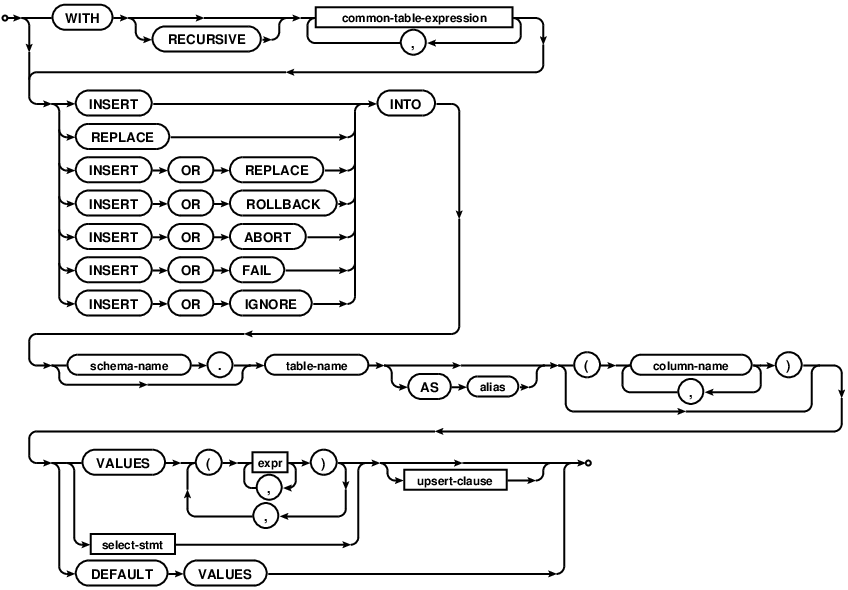Is it possible to insert multiple rows at a time in an SQLite database?
update
As BrianCampbell points out here, SQLite 3.7.11 and above now supports the simpler syntax of the original post. However, the approach shown is still appropriate if you want maximum compatibility across legacy databases.
original answer
If I had privileges, I would bump river's reply: You can insert multiple rows in SQLite, you just need different syntax. To make it perfectly clear, the OPs MySQL example:
INSERT INTO 'tablename' ('column1', 'column2') VALUES
('data1', 'data2'),
('data1', 'data2'),
('data1', 'data2'),
('data1', 'data2');
This can be recast into SQLite as:
INSERT INTO 'tablename'
SELECT 'data1' AS 'column1', 'data2' AS 'column2'
UNION ALL SELECT 'data1', 'data2'
UNION ALL SELECT 'data1', 'data2'
UNION ALL SELECT 'data1', 'data2'
a note on performance
I originally used this technique to efficiently load large datasets from Ruby on Rails. However, as Jaime Cook points out, it's not clear this is any faster wrapping individual INSERTs within a single transaction:
BEGIN TRANSACTION;
INSERT INTO 'tablename' table VALUES ('data1', 'data2');
INSERT INTO 'tablename' table VALUES ('data3', 'data4');
...
COMMIT;
If efficiency is your goal, you should try this first.
a note on UNION vs UNION ALL
As several people commented, if you use UNION ALL (as shown above), all rows will be inserted, so in this case, you'd get four rows of data1, data2. If you omit the ALL, then duplicate rows will be eliminated (and the operation will presumably be a bit slower). We're using UNION ALL since it more closely matches the semantics of the original post.
in closing
P.S.: Please +1 river's reply, as it presented the solution first.
Yes it is possible, but not with the usual comma-separated insert values.
Try this...
insert into myTable (col1,col2)
select aValue as col1,anotherValue as col2
union select moreValue,evenMoreValue
union...
Yes, it's a little ugly but easy enough to automate the generation of the statement from a set of values. Also, it appears you only need to declare the column names in the first select.
Yes, as of SQLite 3.7.11 this is supported in SQLite. From the SQLite documentation:

(when this answer was originally written, this was not supported)
For compatibility with older versions of SQLite, you can use the trick suggested by andy and fearless_fool using UNION, but for 3.7.11 and later the simpler syntax described in here should be preferred.
I wrote some ruby code to generate a single 500 element multi-row insert from a series of insert statements which was considerably faster than running the individual inserts. Then I tried simply wrapping the multiple inserts into a single transaction and found that I could get the same kind of speed up with considerably less code.
BEGIN TRANSACTION;
INSERT INTO table VALUES (1,1,1,1);
INSERT INTO table VALUES (2,2,2,2);
...
COMMIT;